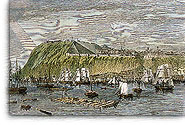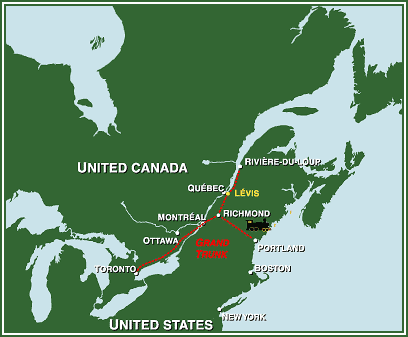Britain's strategy: defend Québec
Lévis Forts National Historic Site

Quebec City seen from the river, during the Prince of Wales' visit in 1860
© The Illustrated London News / 1st September 1860
The building of the forts at Lévis marked the end of a transition period in the art of fortifying a town. Military engineers were trying to distance defensive structures from the heart of the town.
Two factors were to accelerate the process. First there was the increasing use of rifled artillery which, by its very nature, challenged the effectiveness of existing defensive works, because the enemy could now fire canons from a much greater distance. Then there was the introduction of the railway, which was being widely adopted in Canada at this time. As the number of railway lines increased, it became much easier for the enemy to transport artillery to places that would have otherwise been difficult to access. This created a new challenge for defence strategies.
The American Civil War also raised numerous concerns. The Grand Trunk Railway from Montréal to Lévis had a branch line through Richmond to Portland, Maine. This created a serious threat for the fortifications at Québec. The border to defend had now become much broader and there were simply not enough military resources to handle the job. This, coupled with all the political factors surrounding this war, made the defence of Québec all the more important to the British strategy.

Simplified view of the Grand Trunk Railway
© National Archives of Québec
- Date modified :